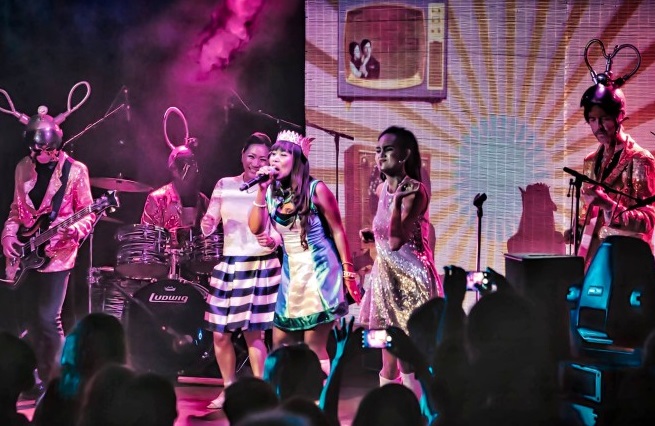Khmer Music – The Soul of Khmer
Written by iHeartKhmer, October 30, 2022
An intrinsic part of the Cambodian music scene, Khmer music dates back to the era of the Khmer Empire. Although, Cambodia is home to other music, Khmer music has always been an essential component of the Khmer culture.
Khmer music attained its bloom during the Angkorskaya period. No religious, temple celebration or a wedding is complete without it. The walls of the ancient temples of Angkor showcase the beautifully carved celestial dancers and the different musical instruments used in those times, standing as witness to the centuries old past of the music.

Originally Khmer music was not meant for entertaining, but the combined sound that emanates from the instruments was used as a means of communication with God and the spirits.
Khmer music is five-tone or pentatonic with a rhythm determining the structure. This is the reason the shock instruments, such as the drums, double kettle-drums and gongs hold the main place in an orchestra. To the westerner, it may seem to lack harmony, as the music from one musician may give a different tune from that of the others.
Classical Khmer music is divided into three categories: Pinpeat, Phleng kar and Mahori. Pinpeat, which consists of both stringed and percussion instruments, is associated to all classical performances, prayers and other ceremonies. This ensemble dates back to more than a thousand years ago, to the Angkor era. The beginnings of this ensemble are traced back to the courts during that era. It holds the pride of place in Khmer music and is the strongest ensemble of all. There are said to be more than 250 theme melodies in this ensemble. Each and every piece is associated with relevant actions performed on the stage. The sound from these instruments is one of the most enchanting, with the capacity to make people happy.
The Pinpeat ensemble is said to be the basis of other ensembles, such as the phlaeng mahaori, phlaeng knong schoor and khlang chnak. Mahory uses only stringed instruments. Today’s music ensembles are found everywhere in Cambodian villages, like the pinn, skor yol, chhing, which are similar to those of the old.
Since Khmer music did not have any notation and was handed down from teacher to student just through memory, there has been a lot of improvisation with major influences of the American music; especially rap. The modern Mahori or Mahori Samai uses the organ, flute, guitar and other western musical instruments.
Most Khmer musicians become highly proficient on one instrument, but learn to play several other instruments. This multi-instrumentalism depicts musicianship. In the absence of a single person conducting the orchestra, every musician has to understand the other musician’s music.
For Cambodia, coming to terms with the violent past is not easy, but the hypnotic Khmer music, which has survived those tragic years; brings the glory of the past to the present and fills the hearts with joy. Khmer music is the soul of Khmer; it soothes the mind and heals the heart of every Cambodian.

Discuss about: Khmer Music – The Soul of Khmer
You must be logged in to post a comment.